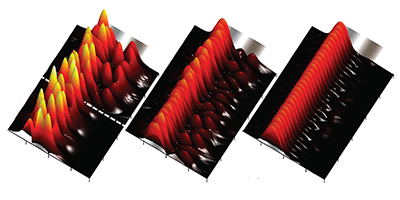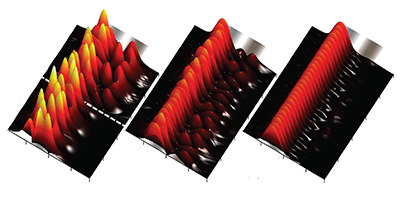Particle Physics Theory Inspires Optics
Supersymmetry is an idea designed to overcome certain problems in the standard model of particle physics. The theory states that every particle (like an electron) has a superpartner with a quantum mechanical spin that differs by . Though none of these particles have been detected at particle accelerators, supersymmetry itself—or, more precisely, the math behind it—may be making inroads into the field of optics. In Physical Review Letters, Mohammad-Ali Miri at the University of Central Florida, Orlando, and colleagues propose that optical supersymmetric partners could be used to manipulate light in optical devices.
Miri et al. considered a wave propagating through a waveguide with a given refractive index landscape. Applying the same mathematical transformation that relates a particle to its superpartner, they found the waveguide’s superpartner and its corresponding refractive index landscape. The authors showed that the waveguide and its superpartner were phase matched, meaning every mode had a counterpart with the exact same propagation constant in the partner structure. Therefore, light could efficiently pass from one waveguide to the other. The only exception was the fundamental mode, which didn’t leak into the “superpartner.”
Such devices could, Miri et al. argue, be exploited to selectively filter specific modes of light from a wave packet. Normally, when an arbitrary input excites a multimode waveguide, it produces a random optical field. However, if the waveguide’s superpartner is brought into close proximity, all modes, apart from the fundamental, will couple between the two structures. And if the superpartner is lossy, the higher modes will eventually disappear, leaving only the fundamental mode behind. – Katherine Thomas





